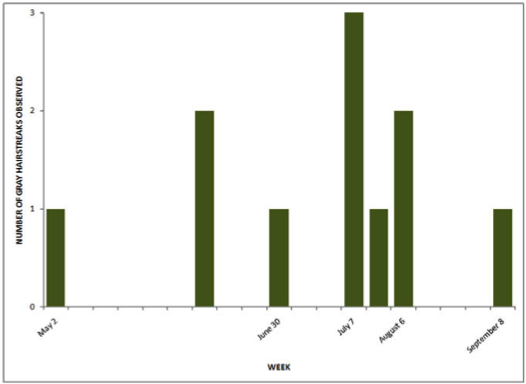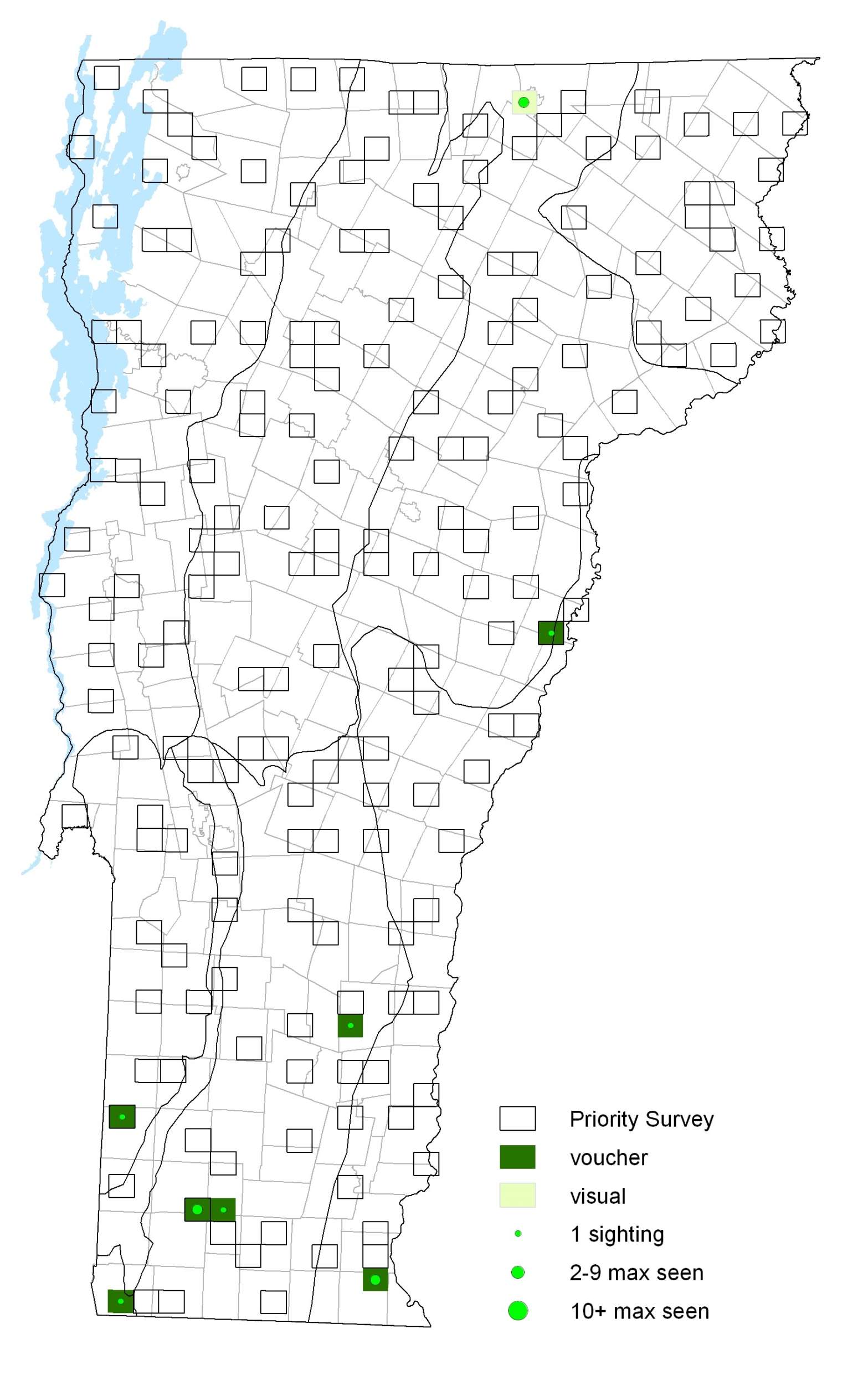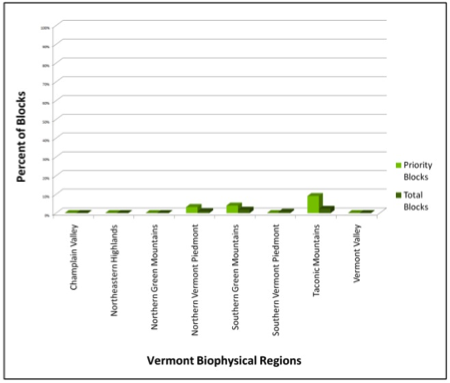|
Resident Conservation Status North American Range |
A successful generalist, their larvae feed on the seeds and flowers of nearly 20 different plant families. They are fast, erratic fliers and males are known to engage in aerial chases. Males perch all afternoon on small trees and shrubs to seek receptive females. Opler and Krizek (1984) write that mated pairs have been seen only at night, after 10:00. However, a VBS observer reported daylight mating in a garden (26 July 2006, Newport City, O. Campbell). Eggs are laid singly on flowers of hostplant. Young caterpillars feed on flowers and fruits; late instars may eat leaves. Pupae overwinter
Identification
One tail on hindwing. Upperside blue-gray with large red spot near tail. Underside of spring/fall form is dark gray, summer form is paler gray. Relatively straight postmedian line is white, bordered with orange on the inside edge.
Flight
In Massachusetts two flights, first from early May to mid June and second from early July to late September. Few records for early flight in Vermont. Extreme dates: 2 May 2007 in Pownal (K. Hemeon) and 8 September 2006 in Chester (M. Reiter).
Distribution and Habitat
Most records during VBS reported from southern Vermont. Never abundant. It prefers open, nonforested habitats and is common in disturbed, weedy areas. Caterpillars eat flowers and fruits from wide variety of plants; most often from pea (Fabaceae) and mallow (Malvaceae). Adults nectar from many flower species including dogbane (Apocynum), milkweed (Asclepias), goldenrod (Solidago), and White Clover (Trifolium repens).







